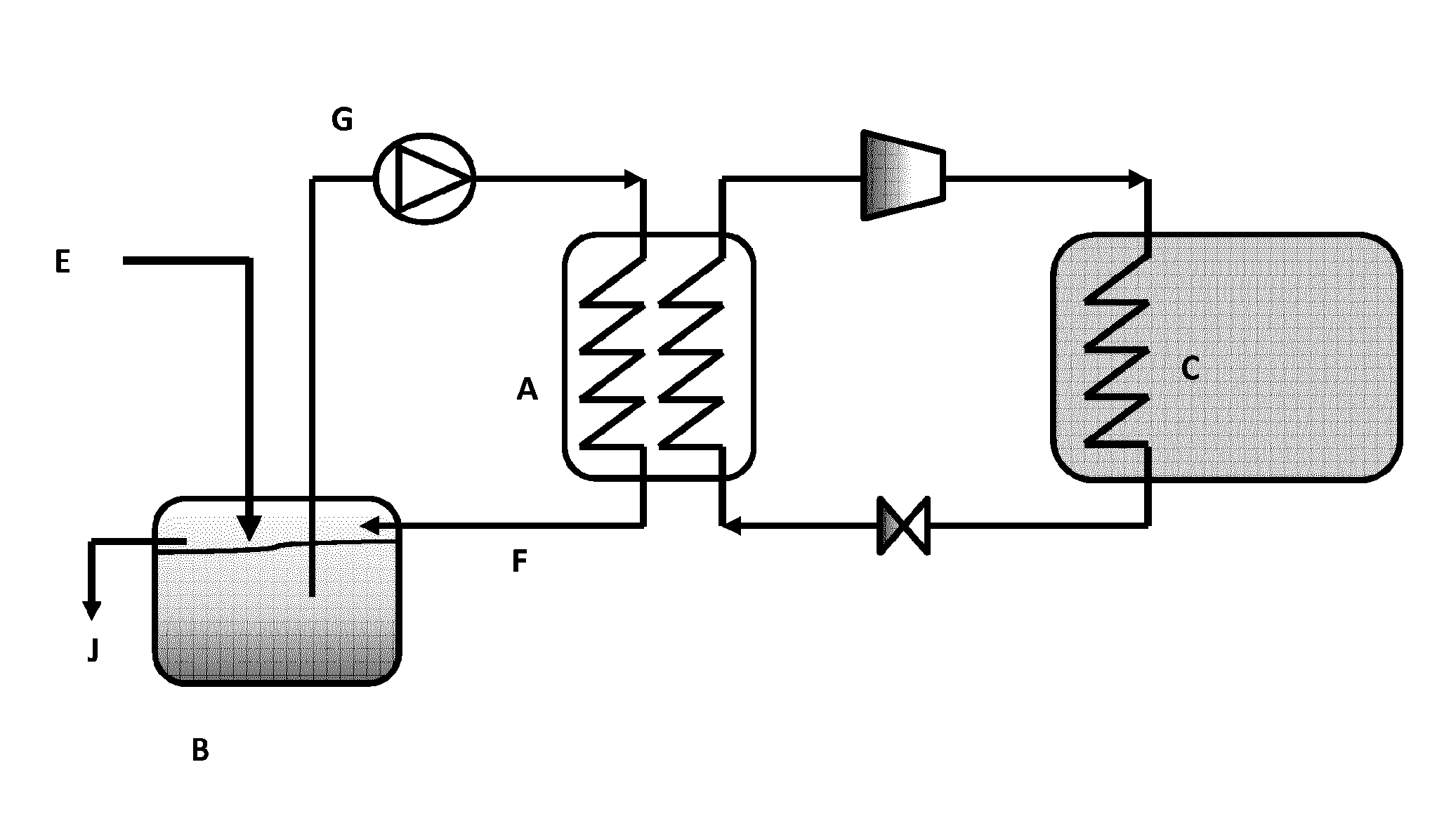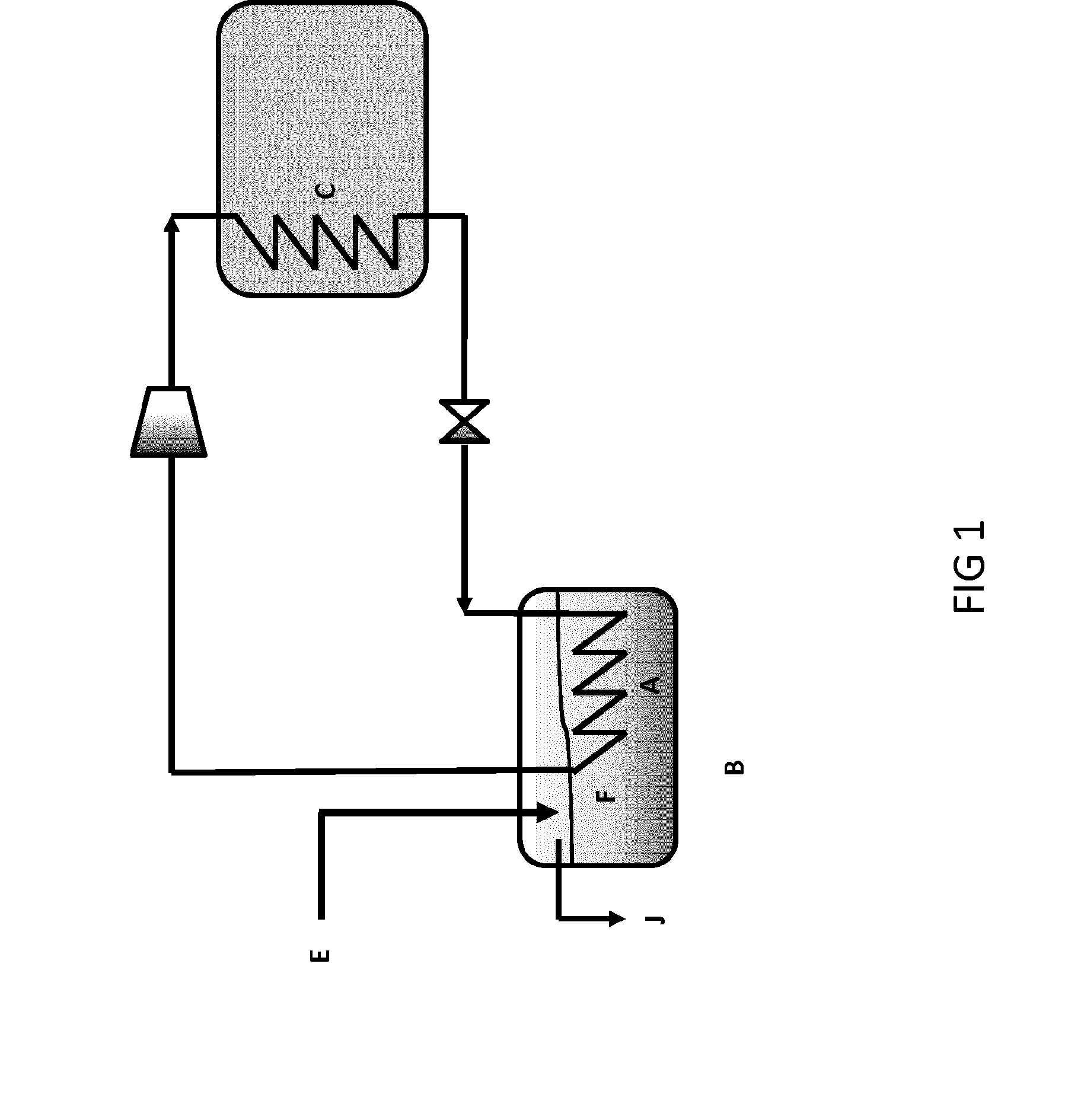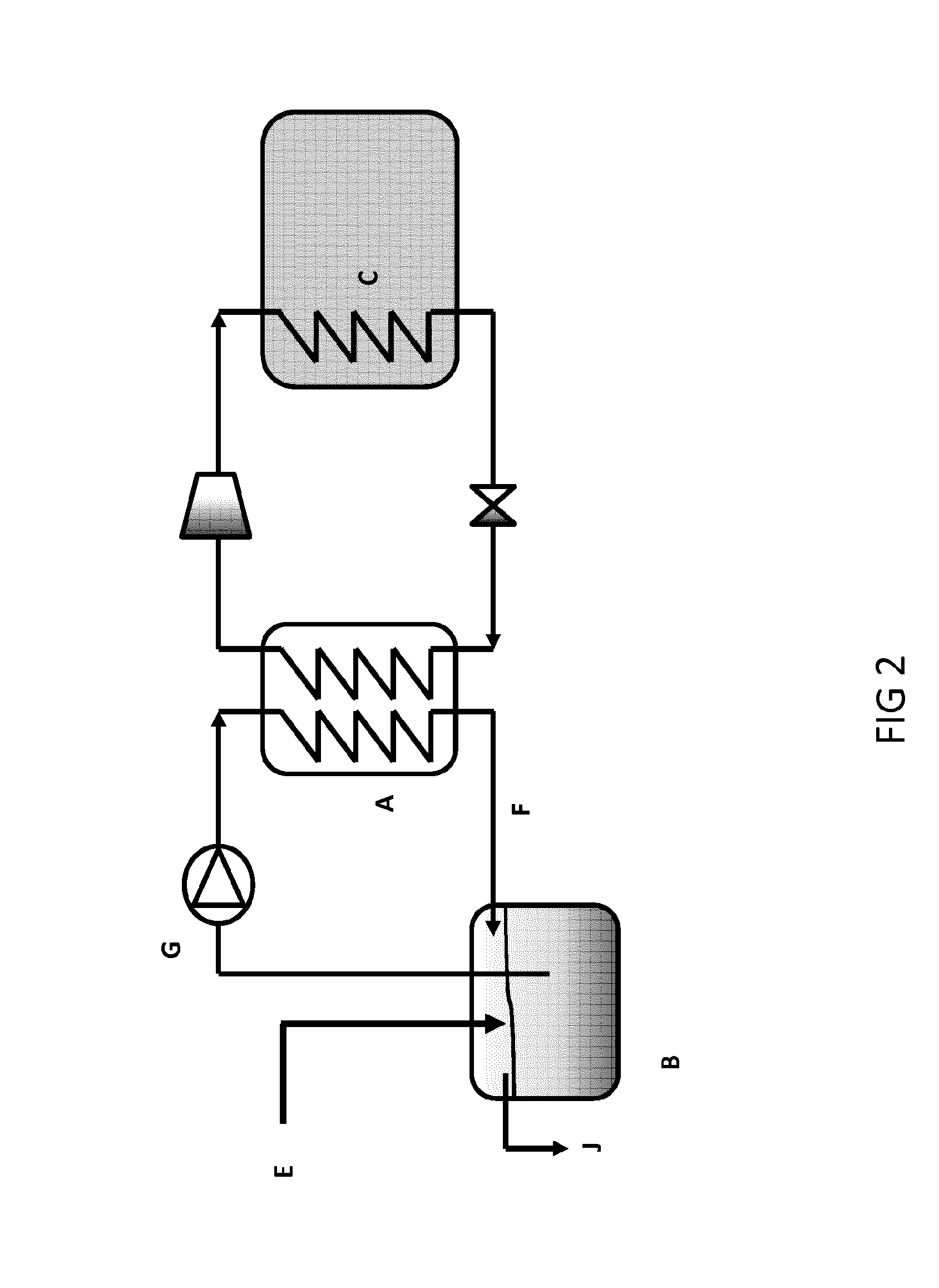Heat pump system using latent heat
a heat pump and latent heat technology, applied in the field of heat pump systems, can solve the problems of large installation space, difficult to pump back ice formed by latent heat extraction into separate injection wells, and specific heat can be extracted, etc., and achieve the effect of lack of building spa
- Summary
- Abstract
- Description
- Claims
- Application Information
AI Technical Summary
Benefits of technology
Problems solved by technology
Method used
Image
Examples
first embodiment
[0029]In a first embodiment in accordance with the present invention and as illustrated in FIG. 1, a heat pump system is provided comprising an heat-exchanger (A) extracting latent heat from liquid stored in a reservoir, thereby forming ice slurry (F), and means for delivering said heat to a heat consumer (C), characterized in that the heat pump system comprises random input of extrinsic liquid (E) into the reservoir (B) and means (J) for removing ice slurry stored in the reservoir outward the system
[0030]In the context of the present invention, random input of extrinsic liquid may be input on regular or irregular,—depending on availability of the extrinsic liquid—, moments in time of any kind of extrinsic liquid, i.e. liquid brought into the reservoir from anywhere outside the heat pump system and containing a certain amount of thermal energy. Examples may be input of collected rainwater, domestic waste water, seawater, process water or fluids from any kind of manufacturing or indu...
example 1
[0064 illustrates the reduced reservoir size of a heat pump system in accordance with the present invention compared to conventional systems:
[0065]An average Belgian house of 150 m2, occupied by 4 residents, isolated conform the current local regulations, exposed to the average Belgian weather conditions requires a reservoir of approximately 20 000-25 000 liters to supply heat for heating the house and for generating domestic hot water. The reservoir is incorporated in the soil requiring a ground level surface of less than a parking place for 1 car.
example 2
[0066 illustrates the application of a heat pump system in accordance with the present invention in urbanized areas:
[0067]The rainwater pit to supply water for the heat pump can be used by several users. The rainwater must then be distributed by a rainwater distribution loop. The rainwater reservoir is installed under the asphalt of the public road and is integrated with the other utility supplies and drain systems. Since the surface to collect rainwater is an important parameter in the design and sizing of the rainwater pit, it is beneficial to use the surface of the public road combined with the surfaces of the roofs of the houses to collect as much as possible rainwater. The system becomes now a public utility system that is explored and maintained by for example a public or private held utility company. It makes the use of heat pumps feasible in densely populated areas, which is almost impossible with the traditional heat pump technology.
[0068]EXAMPLE 3 illustrates the applicati...
PUM
 Login to View More
Login to View More Abstract
Description
Claims
Application Information
 Login to View More
Login to View More - R&D
- Intellectual Property
- Life Sciences
- Materials
- Tech Scout
- Unparalleled Data Quality
- Higher Quality Content
- 60% Fewer Hallucinations
Browse by: Latest US Patents, China's latest patents, Technical Efficacy Thesaurus, Application Domain, Technology Topic, Popular Technical Reports.
© 2025 PatSnap. All rights reserved.Legal|Privacy policy|Modern Slavery Act Transparency Statement|Sitemap|About US| Contact US: help@patsnap.com



